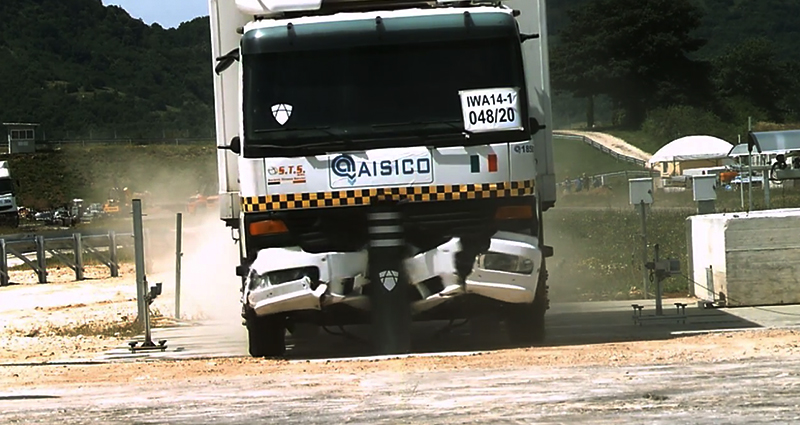- 01-10-2024
What Are The Differences Between Crash Test Certifications?
PAS 68, ASTM F2656, and IWA 14 certifications are international security standards for barrier systems, all of which are crash test certifications. However, each is regulated according to different standards, and there are some key differences in their certification processes. Below is an explanation of what these certifications mean and their differences:
PAS 68 (Publicly Available Specification 68) Origin: Developed by the British Standards Institution (BSI) in the United Kingdom. Purpose: PAS 68 is a standard that evaluates the performance of barriers in vehicle crash tests. This standard is specifically designed to measure the effectiveness of high-security barriers against terrorist attacks. Features: The tests measure how much weight a barrier can withstand and how much the barrier moves after the vehicle impact (penetration distance). PAS 68 specifies vehicle weights and speeds (e.g., a 7500 kg truck crashing at 50 km/h) and classifies the barrier’s performance accordingly.
ASTM F2656 Origin: Developed by ASTM International in the United States. Purpose: ASTM F2656 is the American standard that evaluates the performance of vehicle barriers. Like PAS 68, this standard measures the resistance of barriers against vehicle attacks through crash tests. Features: The ASTM standard measures the impact energy that barriers can withstand and classifies their durability. ASTM determines how far the vehicle moves after striking the barrier (penetration depth). The performance level is classified with labels like K, L, and M (e.g., a K12 classification means that a 15,000-pound vehicle traveling at 50 mph is prevented from breaching the barrier).
IWA 14 (International Workshop Agreement 14) Origin: The IWA 14 standard was developed within an international framework and created by the International Organization for Standardization (ISO).
Purpose: IWA 14 can be seen as a global version of the PAS 68 and ASTM F2656 standards. It provides a globally accepted measure to evaluate the performance of barrier systems against vehicle attacks.
Features: IWA 14 combines elements of both PAS 68 and ASTM F2656. It measures the vehicle's weight, speed, and the barrier’s penetration distance. Its main goal is to demonstrate that the barrier systems meet internationally acceptable performance standards.
Differences Between the Certifications
Scope: PAS 68 is more commonly used in the United Kingdom, while ASTM F2656 is widely used in the U.S., and IWA 14 is adapted for global use and intended for international application.
Testing Criteria: All three certifications are based on vehicle crash tests, but their criteria for vehicle speeds, weights, and measuring the barrier's movement after impact may differ. For example, PAS 68 and IWA 14 provide clear classifications for specific vehicle speeds and weights, while ASTM F2656 expresses the results more in terms of classifications like K, L, and M.
Application: PAS 68 is frequently used in the U.K. and Europe, while ASTM F2656 is preferred in the American market. IWA 14 is used in global projects and offers a standardized solution worldwide.
All three certifications are important standards for evaluating the security performance of barrier systems. However, they differ in terms of geographic use and testing criteria. Companies operating globally, like Arma Kontrol, may use one or more of these certifications to demonstrate that their products provide world-class security.
 Virtual Showroom
Virtual Showroom
